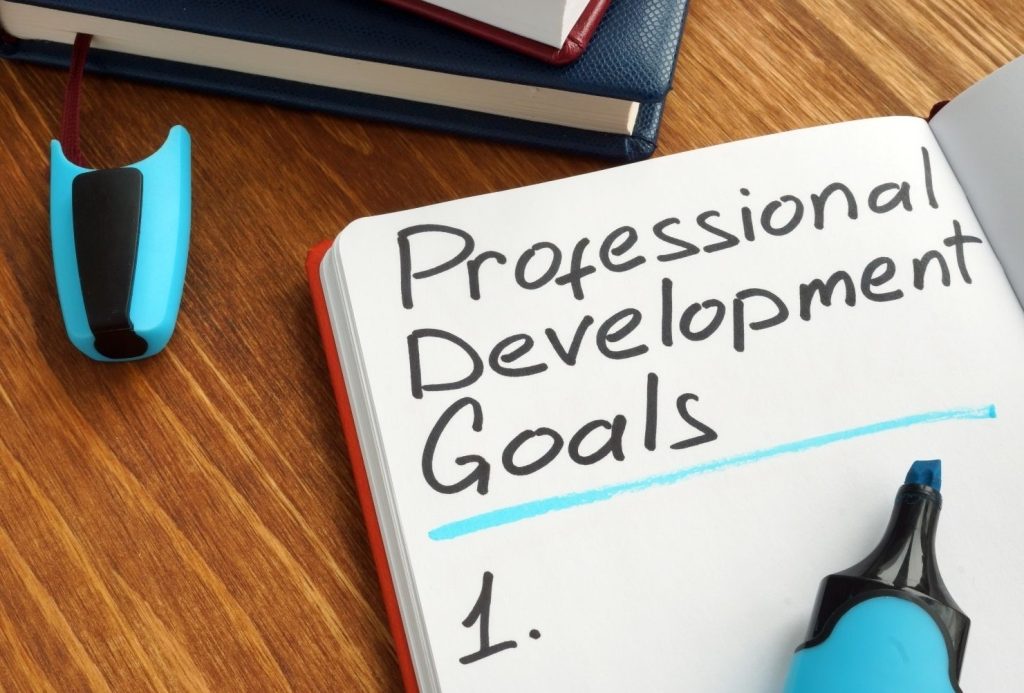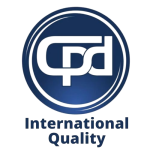Quick Overview
The Continuing Professional Development (CPD) cycle is a structured process that helps professionals maintain and enhance their skills throughout their careers. It ensures learning is purposeful, reflective, and aligned with career growth.
This blog will walk you through:
✅ The four stages of the CPD cycle: identify, plan, act, and reflect for continuous improvement.
✅ How to assess learning needs and align them with career goals.
✅ Planning strategies using SMART objectives and suitable learning activities.
✅ Ways to engage in formal and informal learning opportunities.
✅ The importance of reflection for evaluating progress and uncovering new gaps.
✅ How the CPD cycle supports long-term career growth, adaptability, and competitiveness.
The CPD cycle is a structured approach to ongoing learning and skill enhancement throughout one’s career. It involves regularly assessing learning needs, planning development activities, taking action, and reflecting on progress. This cyclical process ensures that professionals are consistently growing, staying up-to-date with industry trends, and improving their performance.
Following the CPD cycle is crucial for maintaining relevance and achieving long-term career success. This blog will explain the key stages of the CPD cycle and how professionals can use it to enhance their development.
What is the CPD Cycle?
Definition of the CPD Cycle:
The Continuing Professional Development (CPD) cycle is a structured, continuous process designed to help professionals maintain and improve their skills, knowledge, and competencies. It supports ongoing learning by providing a systematic approach to professional growth. The CPD cycle typically includes four stages: identifying learning needs, planning, acting (learning), and reflecting. It is often used by professionals across various industries, from healthcare and education to business and IT, to ensure they stay updated with industry changes and remain competitive in their fields.
The Purpose of the CPD Cycle:
The main purpose of the CPD cycle is to promote a disciplined, goal-oriented approach to professional development. By following the cycle, professionals can regularly assess their competencies and knowledge, identify where improvements are needed, and engage in activities that address these gaps. The cycle doesn’t stop after learning; it also includes reflecting on the acquired knowledge and skills to assess their impact on performance. This cyclical nature ensures continuous improvement and adaptation to new developments within a profession.
Importance of a Structured Approach:
A structured approach to professional development offers several key advantages. First, it ensures that learning is purposeful, not haphazard. Professionals are encouraged to think strategically about their development rather than passively acquiring new skills. Second, the CPD cycle helps professionals stay accountable by setting clear goals and timelines for achieving them. Finally, a cyclical process allows for regular reflection, ensuring that learning activities have a meaningful impact on one’s performance and that any gaps or shortcomings can be addressed in the next cycle. This goal-oriented and reflective model leads to more effective, sustained career growth.

Stage 1: Identify Learning Needs
Assess Current Skills and Knowledge:
The first stage of the CPD cycle involves a thorough assessment of one’s current skills, knowledge, and competencies. Self-assessment is crucial here, as it helps professionals identify gaps in their understanding or performance. This process requires a candid evaluation of strengths and areas for improvement. For example, a project manager might assess their technical skills, leadership abilities, and time management, noting which areas need further development.Using tools such as skills assessments or career development frameworks, professionals can better understand where they stand and what they need to focus on. This step helps prevent stagnation and ensures that professionals do not become complacent in their roles. It also helps avoid the risk of becoming outdated in a rapidly changing professional landscape.
Align Learning Needs with Career Goals:
Once the assessment is complete, professionals should link their identified learning needs with their long-term career goals. This alignment is critical because it ensures that learning activities are relevant and directly contribute to career advancement. For instance, if an IT professional aspires to transition into a leadership role, their CPD activities should focus on developing management and communication skills alongside technical expertise. By connecting learning needs to career objectives, professionals can ensure that their development efforts contribute to immediate job performance and future career aspirations.
Gather Feedback from Others:
In addition to self-assessment, gathering feedback from peers, supervisors, clients, or even team members is valuable. External feedback often highlights areas for improvement that individuals might overlook or underestimate. Constructive feedback can reveal patterns in behavior or performance that require attention, such as communication challenges or leadership gaps. For example, managers might receive feedback about their decision-making processes or how they handle team conflicts. This input provides a more comprehensive view of learning needs and ensures that development plans address both personal perceptions and others’ observations.

Stage 2: Plan
Set SMART Learning Objectives:
With a clear understanding of learning needs, the next step is to set Specific, Measurable, Achievable, Relevant, and Time-bound (SMART) objectives for professional development. These goals provide direction and clarity, ensuring that learning efforts are focused and productive. SMART objectives help avoid vague or unrealistic goals that can derail progress. For example, instead of setting a broad goal like “improve project management skills,” a SMART objective would be: “Complete an advanced project management course within the next six months and apply the techniques learned to lead a new project.”SMART goals also make it easier to track progress. Since each component (Specific, Measurable, Achievable, Relevant, Time-bound) is clearly defined, professionals can assess whether they are on track or need to adjust their approach. This clarity not only boosts motivation but also ensures that learning is directly tied to career goals.
Choose Appropriate Learning Activities:
Once SMART goals are established, it’s time to select the learning activities that will help achieve these objectives. The beauty of the CPD cycle lies in its flexibility, allowing professionals to choose from a wide range of learning activities that suit their needs and preferences. These activities can include formal education, such as workshops, conferences, and certification courses, as well as informal learning, such as self-directed research, mentorship programs, or online courses.For example, a healthcare professional looking to stay current with new medical practices might attend annual conferences, engage in peer-to-peer learning, and complete relevant online training modules. Meanwhile, a software developer aiming to enhance their programming skills may enroll in advanced coding courses, participate in hackathons, and read research papers. Selecting the right combination of activities ensures that learning is comprehensive, varied, and engaging.
Create a Timeline for Completion:
An effective CPD plan requires more than just setting objectives and choosing activities; it also involves a clear timeline for completion. Without deadlines, even the most well-intentioned plans can fall apart due to procrastination or competing priorities. Establishing a timeline helps professionals stay on track and ensures that learning activities are completed in a structured and timely manner. For example, a professional might set a goal to complete an online course within three months, attend a relevant industry conference within six months, and schedule regular review sessions with a mentor to discuss progress. By breaking down learning objectives into smaller, time-bound tasks, professionals can avoid feeling overwhelmed and maintain steady progress. Additionally, having a timeline encourages accountability and allows for the adjustment of plans if unforeseen challenges arise. This stage of the CPD cycle lays the groundwork for focused, effective learning, ensuring that professionals remain committed to their growth and can easily monitor their achievements. It prepares them for the next phase, where they actively engage in the planned activities and begin applying their new knowledge.

Stage 3: Act (Engage in Learning)
Participate in Planned Learning Activities:
Once a clear plan with SMART objectives is in place, the next step is for professionals to actively participate in the learning activities outlined in their CPD plan. These activities can range from formal learning—such as attending workshops, training courses, or conferences—to more informal learning, like self-directed research, peer-to-peer discussions, or on-the-job training. Engaging fully in these activities requires commitment and a proactive mindset. For example, a professional aiming to improve leadership skills might attend leadership seminars or enroll in a management training course. Simultaneously, they might engage in informal learning by seeking mentorship or volunteering to lead projects at work. These activities complement each other, blending structured education with hands-on, practical experiences reinforcing learning. It’s important to approach every learning opportunity with an open mind and a focus on how it can be applied in real-world scenarios.
Stay Open to New Learning Experiences:
While it’s important to follow the CPD plan, professionals should also remain flexible and open to unexpected learning opportunities. The dynamic nature of most industries means that new trends, technologies, or regulations can emerge at any time, presenting opportunities for growth outside of the original plan. For instance, attending a conference might lead to unexpected networking opportunities or new insights that weren’t part of the original learning objectives. Professionals should be ready to embrace these opportunities when they arise. For example, a project manager who initially planned to focus solely on technical skills may realize, through new insights, that they also need to develop interpersonal skills to lead teams effectively. Being open to new experiences allows professionals to adapt their learning plans as needed, ensuring that they stay relevant in a rapidly changing professional landscape.
Document Progress:
As professionals engage in their learning activities, it’s essential to document progress. Tracking what has been learned ensures that individuals have a clear record of their development, which can be referenced for future assessments, job evaluations, or certification renewals. Documenting progress also helps professionals reflect on the learning outcomes, making it easier to assess whether the activities are meeting the intended objectives. Keeping
, professionals can write down key takeaways, new skills learned, and how they plan to apply them in their current role. For informal learning, such as self-directed research or mentorship sessions, professionals should similarly track the knowledge gained and any insights that could contribute to future development. These records will be invaluable during the reflection stage and when planning the next cycle of learning.

Stage 4: Reflect
Evaluate the Outcomes of Learning:
Reflection is a critical component of the CPD cycle and plays a significant role in ensuring continuous improvement. After completing the planned learning activities, professionals should take time to evaluate the outcomes. This involves assessing the impact of their learning on their current performance, skills, and knowledge. Reflection helps professionals determine whether their CPD activities have been effective in addressing the identified gaps. For example, after completing a training course on time management, a professional might evaluate whether they’ve become more efficient at managing their workload and meeting deadlines. This evaluation should not only focus on tangible improvements but also on how the new skills have enhanced overall confidence and competence in their role. Reflecting on these outcomes allows professionals to measure the success of their CPD efforts and identify areas that may still need further development.
Use Reflection to Identify Gaps:
Reflection goes beyond evaluating successes; it also helps uncover any gaps that may have been overlooked or insufficiently addressed during the learning process. Professionals should critically assess whether the learning activities met their initial goals or if additional learning is required in certain areas. For instance, after reflecting on a completed course, a professional may realize that while they’ve gained theoretical knowledge, they still need to develop practical application skills in a particular area. This critical reflection ensures that professionals remain objective about their progress. It’s important to recognize that professional development is ongoing, and even after significant learning activities, there may still be areas that need attention. Identifying these gaps early allows professionals to incorporate them into the next CPD cycle, ensuring that no critical competencies are left underdeveloped.
Continuous Improvement Through Reflection:
The CPD cycle is inherently designed to be an ongoing process, meaning that reflection naturally leads back to the first stage: identifying new learning needs. As professionals reflect on their progress, they may discover new skills or knowledge they need to stay relevant in their industry. Continuous improvement is a key principle of CPD, and reflection ensures that professionals never stop learning and evolving. For example, after completing several CPD activities, a marketing professional may realize that while they’ve developed excellent digital marketing skills, they now need to focus on improving their data analysis capabilities to better measure the effectiveness of their campaigns. This reflection helps inform the next phase of CPD, allowing the professional to set new objectives and plan future learning activities . Reflection also fosters a growth mindset, encouraging professionals to see learning as a lifelong journey. By continuously reflecting on their development, professionals ensure that they are always aware of their strengths and areas for improvement, leading to sustained career growth and adaptability. Additionally, by continuously engaging in this reflective process, professionals remain proactive in managing their career trajectories rather than waiting for external factors to prompt development.
Conclusion
The CPD cycle is essential for ensuring continuous learning, skill development, and career growth. By following its stages—identifying learning needs, planning, engaging in learning, and reflecting—professionals can stay competent, adapt to industry changes, and achieve their career goals. To remain competitive in your field, it’s crucial to actively engage in every stage of the CPD cycle. Start by assessing your learning needs today, and use the CPD cycle to plan and manage your ongoing professional development for long-term success.

